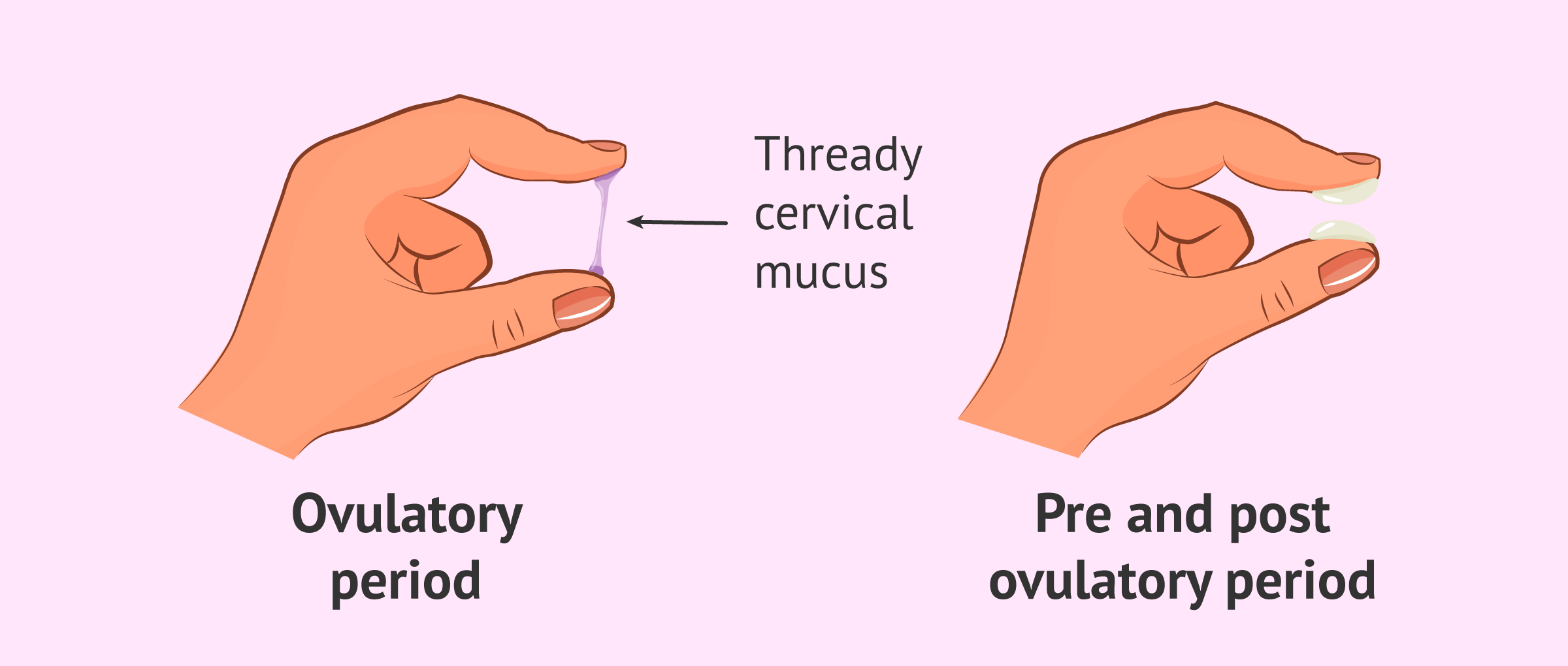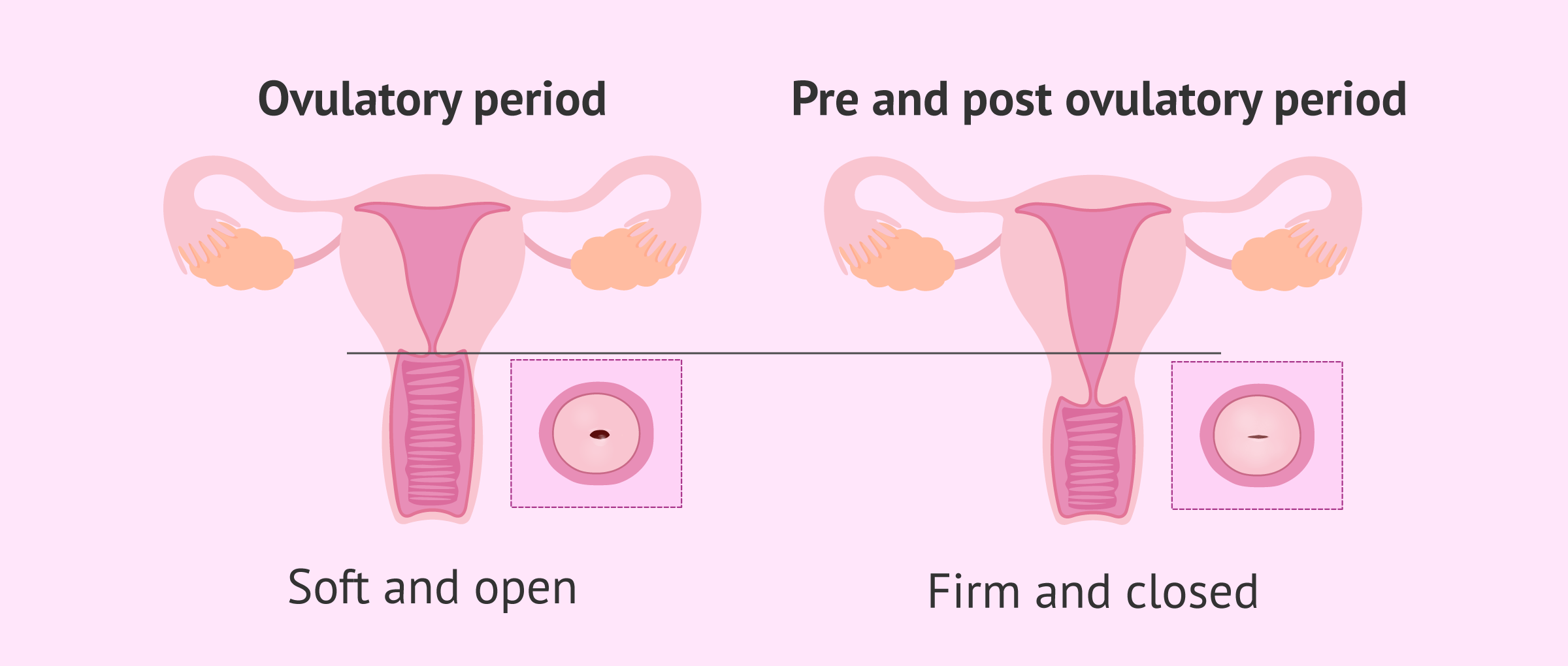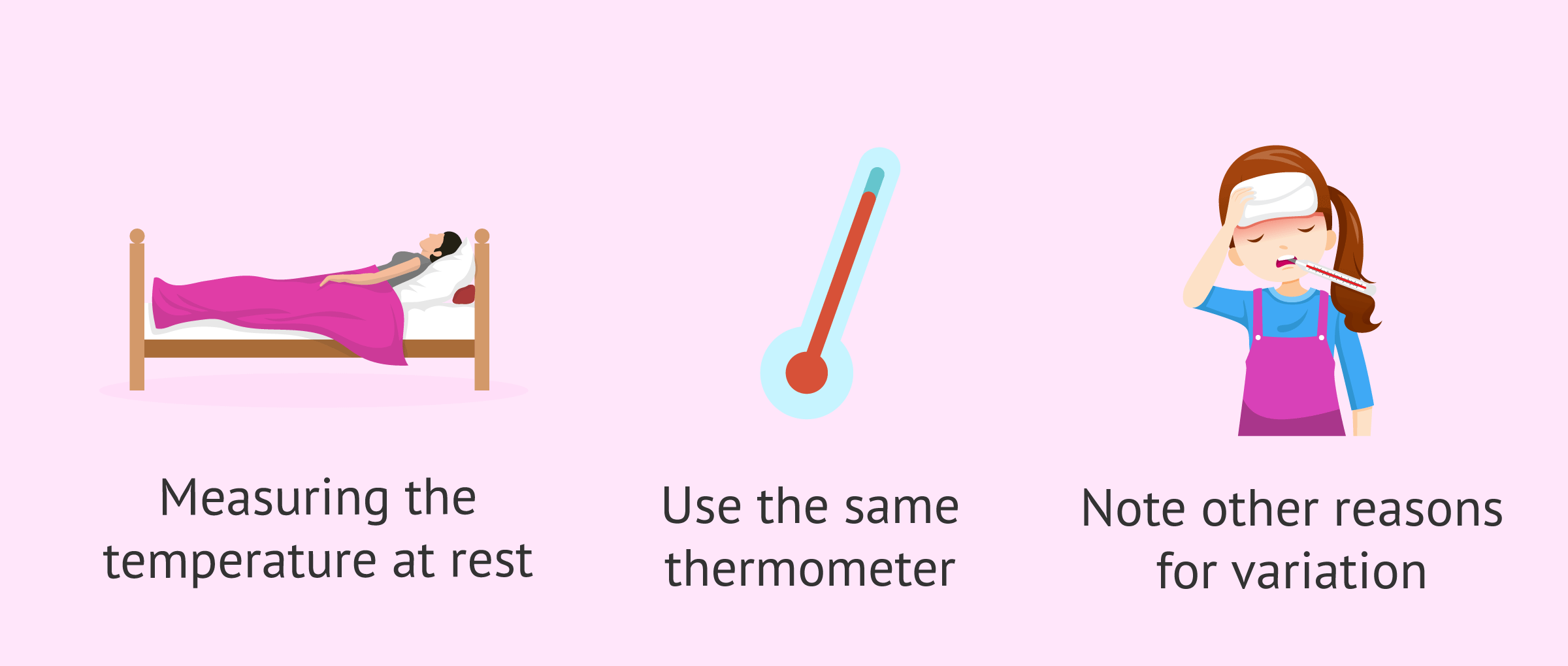Female fertility signs are indicators that can help us determine when ovulationoccurs. Identifying when a woman ovulates becomes important when a pregnancy is being sought since the days close to it are more likely for the egg and sperm to meet and fertilization to occur. These days are, therefore, the woman's most fertile days.
In a regular menstrual cycle, ovulation occurs 14 days after the onset of the last menstrual period. Based on this, there are calendars that allow you to calculate the most fertile days to try to get pregnant. However, menstrual cycles are not always regular, so the time of ovulation may change from one cycle to another even in the same woman. That is why learning to recognize these other signs of female fertility can be very helpful.
However, it is highly recommended not to become obsessed with planning sex only on these most fertile days. Such planning and control could cause stress that, contrary to what is desired, could be counterproductive in the search for gestation.
Provided below is an index with the 9 points we are going to expand on in this article.
- 1.
- 2.
- 3.
- 4.
- 5.
- 6.
- 6.1.
- 6.2.
- 6.3.
- 6.4.
- 6.5.
- 7.
- 8.
- 9.
Cervical mucus
Cervical mucus is one of the indicators that allow us to know when a woman is in her menstrual cycle. This is a discharge from the cervix that during the pre- and post-ovulatory period is scanty, opaque, and viscous.
However, when ovulation approaches (and due to the action of estrogens) the cervical mucus becomes more abundant, transparent, elastic, thin (it can be stretched between your fingers about 10 cm). Therefore, it is common to say that the cervical mucus looks like raw egg white when the ovulatory period is approaching. In addition, the woman may notice a sensation of wetness.
Thanks to the characteristics acquired by the cervical mucus at the time of ovulation, the ascent of the sperm towards the uterus is easier. In contrast, the properties of cervical mucus during the rest of the menstrual cycle create a barrier and hinder the movement of sperm.
Therefore, knowing how to recognize the appearance of the cervical mucus in the ovulatory period will allow the woman to estimate her most fertile days.
Position of the cervix
The position of the cervix can also be an indicator of female fertility. In the first half of the menstrual cycle, before ovulation, the cervix is firm, closed, dry, and relatively low. Near ovulation, the cervix softens, opens and rises, facilitating the path of the sperm. Within a few days, the cervix becomes firm and closed again.
These changes of the cervix can be self-assessed by palpation, after careful hand washing, to determine the days close to ovulation.
Basal body temperature
The basal temperature in women varies throughout the menstrual cycle. When ovulation has occurred, the woman's temperature is usually 0.5 degrees higher than normal due to increased progesterone levels.
For this reason, it is possible to determine whether a woman has ovulated by taking daily basal temperature measurements to detect such an increase. To implement this method correctly, the following recommendations may be useful:
- Take your resting temperature every morning upon waking up.
- Always use the same thermometer.
- Note the temperature, as well as any reason that could explain a variation.
The main disadvantage of this method is that it detects ovulation a posteriori, i.e. when it has already occurred and can be inaccurate.
LH hormone detection
In a normal menstrual cycle, there is a sharp rise in luteinizing hormone (LH) levels in the female about 36 hours before ovulation. Based on this, there are now methods that can be used at home to detect the LH hormone in the urine and, therefore, allow to estimate when ovulation will occur and to know the most fertile days.
The main advantage of this type of LH hormone test is that it detects the time of ovulation before it has occurred, so it can be very useful when planning to look for pregnancy.
Other signs of fertility in women
In addition to all of the above, there may be other more subtle signs that a woman is in her most fertile days. For example, women often have an increase in libido when they are in their most fertile days.
Nevertheless, there are also women who suffer from certain types of pain caused by the ovulation process itself, so they are also able to identify when ovulation is occurring.
FAQs from users
How do you know if a woman is fertile?
The only way to be sure that a woman is fertile is the pregnancy itself. Nowadays, we have different tests that can make us think that there is a problem. Some of them allow us to deduce that pregnancy will not occur naturally.
Today, there are several factors that allow us to estimate whether it will be more or less likely, since many of them make pregnancy difficult but not completely impossible. Among the most valued are: age, especially of the woman (the older the woman, the fewer good quality eggs); ovarian factors (decreased ovarian reserve); metabolic factors (thyroid disorders, elevated prolactin, diabetes, obesity, toxic habits, etc.); coagulation disorders (hinder implantation or correct growth of the embryo); anatomical factors, genetic factors and immunological factors.
Studies are usually not initiated until 12 months after the search. But in cases of women over 35 years of age, known genetic diseases, irregular menstruation, miscarriages, previous pelvic surgery or men with genital pathology, it should be started earlier, so as not to delay treatment if necessary.
Are there signs for a woman to know if she is fertile?
There are certain signs that may suggest that a woman is not fertile. The first sign is if we have irregular periods or no periods at all. In this case, it is very important to go to the gynecologist to assess the cause of irregular cycles, and discuss the possible impact on fertility, to see if it is advisable, for example, to perform an egg freezing.
There may also be other signs such as very painful periods, dysmenorrhea, which could be associated with endometriosis. In the case of a patient with endometriosis, it is necessary to have regular check-ups with a gynecologist to assess possible treatments and evaluate the ovarian reserve.
In addition, in women who have had pelvic surgeries, or who have fibroids, it is necessary to make a consultation of the possible impact of these processes on future fertility.
On the other hand, in patients with endocrine disorders such as overweight or obesity, thyroid disorders, it is highly advisable to talk to the specialist to assess possible hormonal alterations that may affect the chances of pregnancy.
Finally, those patients who have hirsutism or very marked acne, may also be associated with ovarian hormone alterations that may decrease fertility.
What are the signs of fertility in men?
Men, lacking a menstrual cycle, do not have more or less fertile days.
However, when trying to get pregnant, it is recommended to space sexual intercourse about 2 days apart. More or less abstinence could affect seminal quality.
How do I know if I am fertile enough to get pregnant?
The best thing to do to check if there is a fertility problem is to see a specialist, who will determine the necessary fertility tests you should have. Above all, you should see a specialist after 1 year of unprotected intercourse without achieving gestation (or 6 months if you are older than 35 years).
There are methods such as basal temperature measurement and evaluation of cervical mucus and cervix that can help determine a woman's most fertile days. However, identifying these days does not imply that there is no fertility problem that prevents or hinders gestation.
Are there any home tests to assess female fertility?
Tests that assess female fertility are determined by a specialist. However, there are tests that you can do at home to identify the time of ovulation and, therefore, the most fertile period of a woman's menstrual cycle (but this does not mean that there is no underlying fertility problem).
Some of these tests are: detection of the increase in basal temperature, evaluation of the cervical mucus and the position of the cervix and detection of the LH hormone.
Recommended readings
If you want to learn on which female fertility tests are performed in the office, you can visit the following link: Female Fertility Tests - How Do You Know if You Can't Get Pregnant?
If, on the other hand, you are interested in learning more about timed intercourse, you can read this article: What Is Meant by Timed Intercourse? - Chances of Conception
We make a great effort to provide you with the highest quality information.
🙏 Please share this article if you liked it. 💜💜 You help us continue!
References
Barron ML, Fehring RJ. Basal body temperature assessment: is it useful to couples seeking pregnancy? MCN Am J Matern Child Nurs. 2005 Sep-Oct;30(5):290-6; quiz 297-8.
Curlin M, Bursac D. Cervical mucus: from biochemical structure to clinical implications. Front Biosci (Schol Ed). 2013 Jan 1;5:507-15.
Han L, Taub R, Jensen JT. Cervical mucus and contraception: what we know and what we don't. Contraception. 2017 Nov;96(5):310-321.
Kerin J. Ovulation detection in the human. Clin Reprod Fertil. 1982 Mar;1(1):27-54.
Pyper CM. Fertility awareness and natural family planning. Eur J Contracept Reprod Health Care. 1997 Jun;2(2):131-46.
Steward K, Raja A. Physiology, Ovulation And Basal Body Temperature. 2020 Jul 27. In: StatPearls [Internet]. Treasure Island (FL): StatPearls Publishing; 2021 Jan–. PMID: 31536292.
Su HW, Yi YC, Wei TY, Chang TC, Cheng CM. Detection of ovulation, a review of currently available methods. Bioeng Transl Med. 2017 May 16;2(3):238-246.
FAQs from users: 'How do you know if a woman is fertile?', 'Are there signs for a woman to know if she is fertile?', 'What are the signs of fertility in men?', 'How do I know if I am fertile enough to get pregnant?' and 'Are there any home tests to assess female fertility?'.
Authors and contributors
More information about Cristina Algarra Goosman







Hi, I have been trying to get pregnant for a few months now. I have tried to follow the basal temperature and cervical mucus monitoring methods but the results do not give me any useful pattern to monitor my cycle. What should I do?
Hello Ashley-45,
If you are having trouble getting pregnant it may be normal or you may need to visit a doctor. It all depends on the time you have been trying to conceive and your age. If you are 25 or younger you should start to worry after a year of trying to conceive. If you are older or have been trying for a long time I recommend you complete our Fertility Report. This is a free tool that we have developed to help inform you about the different treatment options you have and the Clinics around you that meet our criteria and would be a good fit.
I hope I have helped you.
Best regards.
Hi everyone, I have regular cycles and I always thought that everything was going well and that I ovulated when it was due. I want to try and get pregnant and I´m not sure when my fertile window is. Can I check if this is true with some method?
Hello Natasha,
Indeed, if you have regular cycles you will ovulate on more or less the same days each month. Anyway, you can check it with your cervical mucus and basal temperature.
If you are looking for pregnancy I recommend you to read the following article: How does Natural Pregnancy Occur?
I hope I could help.
Best regards.